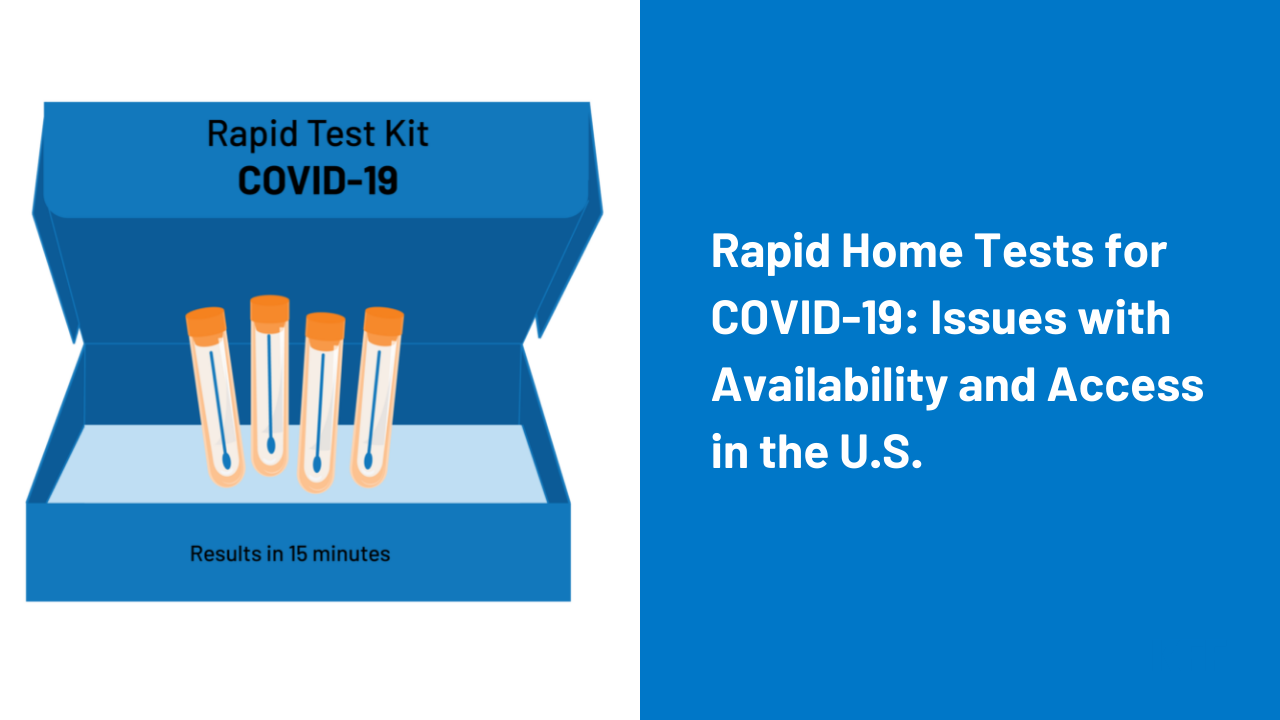While rapid home COVID-19 tests have been identified as an important component of controlling the spread of SARS-CoV-2, the virus that causes COVID-19, there have been ongoing supply challenges in the U.S. Challenges in accessing rapid home tests became more acute as the Delta variant took hold, vaccination rates stagnated, and cases, hospitalizations, and deaths surged. In addition, some workplaces began reopening, millions of school age children returned to in-person school and colleges and universities began the fall semester. Home test supply and access challenges in the U.S. contrast with the experience in several peer countries which have made rapid home tests widely available and at little or no cost. The Biden administration has taken recent steps to address these challenges, including a new announcement that it would work to identify manufacturers of high quality tests to encourage them to bring them to the U.S. market and to streamline the regulatory review pathway for authorization of over-the-counter at-home tests, though it is unclear if or how quickly these measures will fully resolve the issues.
In this brief, we examine the various interrelated factors that have contributed to rapid home test scarcity in the U.S. The five factors we identify include:
- The regulatory framework: The FDA regulatory framework and process are central to the availability of COVID-19 testing, including for home testing. However, some argued the framework for evaluating rapid home tests was initially too stringent, creating challenges for manufacturers seeking authorization and hampering test availability. While the FDA took steps to modify the process, some suggested that the regulatory environment was still too strict. The new announcement that the FDA aims to further streamline the process is likely to address some of these issues.
- Supply chain and the unpredictability of demand: The COVID-19 pandemic has led to supply chain disruptions worldwide, including for tests and their components, negatively impacting test supply. This, coupled with the unpredictability of the pandemic, have made it difficult for manufacturers to gauge demand and at times limited their willingness to scale up production due to perceived business risk, again impacting test availability. Recent steps taken by the administration are designed to increase supply.
- Federal investment: While this may be beginning to shift, the lack of up-front federal investment in testing, including pre-purchasing of tests, is another factor that appears to have impacted testing availability and affordability, and contrasts with the federal government’s approach to vaccines.
- Federal messaging and guidance: Evolving federal messaging and guidance related to the role of testing over the course of the pandemic and limited messaging about home testing may have led to confusion about its importance and impacted public understanding of home testing specifically.
- Cost and coverage: While COVID-19 tests are generally covered by insurance, as required by emergency COVID-19 legislation passed by Congress, and are also available free of charge at many locations in the U.S., this is not the case for over-the-counter rapid home tests. Instead, consumers must pay out of pocket for these tests which can be costly, limiting access and potentially contributing to existing pandemic disparities. Recently, the federal government accelerated purchasing of rapid tests for use in certain community-based settings and negotiating with retailers to lower store prices, albeit for a time-limited period.
Taken together, we identify a number of barriers that have contributed to the scarcity of rapid home COVID-19 tests in the U.S. Recent actions taken by the Biden administration, including steps expected to result in an increase in home test production and to further streamline the authorization process, may alleviate some of these barriers, but others may persist.

